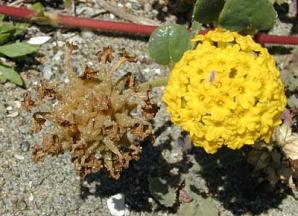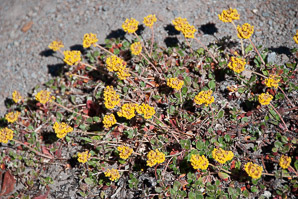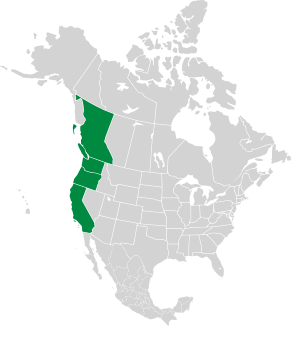
|
Abronia latifolia Eschsch. Yellow sand verbena, coastal sand verbena
Yellow sand verbena grows in loose beach sand, within a couple of hundred feet of the ocean, along the west coast of North America, between southern California and Vancouver Island in British Columbia. It is native to this region. Plants: Less than 6″ (15 cm) in height, forming mats up to 6′ (1.8 m) in size. There are several sand verbenas, but most are purple, and yellow sand verbena occupies only the narrow strip along the west coast ocean front. Leaves: Thick and rounded, 1-2″ (2.5-5 cm) across. Flowers: The neat round “flowers” are really bracts (modified leaves)—the plant does not have petals. The ball-shaped flowerheads are typical of verbenas. They are on stalks 1-3″ (2.5-7.6 cm) high, and each flowerhead is 1-1½″ (2.5-3.8 cm) in diameter. Each individual flower is ¼-½″ (6.3-12 mm) in diameter, and has 5 “petals” which fuse to a long tube. They bloom from May to August. Fruits: A small, winged fruit. Edibility: Roots, which can be several feet long, were eaten by the Chinook Indians. Fruit and flowerhead, from nps.gov. Online References:
The Lady Bird Johnson Wildflower Center Plants for a Future, a resource and information centre for edible and otherwise useful plants
Abronia latifolia description by Thomas H. Kent, last updated 9 Aug 2023. © FloraFinder.org. All rights reserved. |
Range:
|




